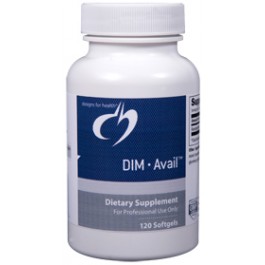
Cayenne(Capsicum annuum; C. frutescens)
By Art Presser, PharmD - President, Huntington College of Health Sciences
Background:
Cayenne or Capsicum consists of the dried...
By Gene Bruno, MS, MHS

Do not go gentle into that good night, Old age should burn and rave at close of day; Rage, rage against the dying of the light. Dylan Thomas, Poet1
According to a prominent researcher of future trends: “For the first time in history, the old will outnumber the young.” 2 This refers to the aging of the baby-boomer population. Census data and projections indicate that over the next 50 years the elderly population will continue to increase more rapidly than the total population. By 2050, it is projected that one in five Americans will be elderly.3 Furthermore, depending upon the official source, the life expectancy of Americans is 78.2 or 78.3 years.4 5
While aging is certainly inevitable, it turns out that the rate at which we age, as well as physiological signs of aging, may not be. In fact, research suggests that we may be able to use certain nutraceuticals to impact our own DNA in such a way as to extend lifespan, while impacting other cellular structures to reduce skin aging and improve cognitive function.
To understand how this works, let’s start with an explanation of why we age, the reasons for which can be classified as programmed and unprogrammed aging. Programmed aging may be described as aging resulting from genetically programmed factors. According to Spence,6 a strong argument can be made for some manner of programmed aging since aging begins at birth and each species seem to have its own average lifespan. The telomere theory of aging (more about this shortly) falls into this classification. Unprogrammed aging may be described as resulting from molecular damage to normal body cells and molecules. The free radical theory of aging falls into this classification.
As cells age, they lose a certain number of base pairs of DNA, known as telomeres, from the end of each chromosome every time cell division takes place. Although the telomeres are ‘sacrificial’ DNA without any necessary information content, there is still a problem. When these telomeres have decreased to a critical length, cell division ceases; although cell senescence (aging) may continue for a time.7 This finite ability to replicate is known as the ‘Hayflick limit,’ and has been seen in normal cultured human and animal cells.8 Fibroblast cells taken from adults would only divide about 20 times in vitro, although this limit is rarely, if ever, reached in the body.9
Here is a more simplistic way to explain this phenomenon: At the ends of our chromosomes are stretches of DNA called telomeres. These telomeres protect our genetic data, making it possible for cells to divide. Telomeres have been compared with the plastic tips on shoelaces because they prevent chromosome ends from fraying and sticking to each other, which would scramble our genetic information. Each time a cell divides, telomeres get shorter. When they get too short, the cell can no longer divide and becomes inactive or “senescent” or dies. This process is associated with aging.10
Free radicals have been described as molecules with unpaired electrons, formed as a result of normal interaction with oxygen.11 Free radicals react chemically with other molecules, causing damage. The free radical theory of aging describes free radical damage to macromolecules such as lipids, proteins and DNA, which in turn may initiate changes explaining the various unprogrammed theories of aging Furthermore, the free radical theory of aging maintains that oxidative stress and reactive oxygen species damage the structure of the genome.
Consequently, damage to DNA can accumulate as chemically “silent” errors in repair—insertions, deletions, substitutions, transpositions, and inversions in DNA sequences—that affect the expression and structure of proteins (e.g. the repair of cells and tissues).12
Telomerase is an enzyme that adds telomere to DNA. Telomerase is found in some cells (e.g. germ cells and stem cells) which must divide continually to perform their functions. By promoting telomerase activity, it is possible to increase telomere length and consequently extend the period of time that cellular division can take place. While this will not makes our cells immortal, it may extend their lifespan.
Following is a discussion of certain nutraceuticals and nutraceutical combinations which have been shown to promote telomerase activity and help increase telomere length.
Vitamin D
It seems like every other week a new study comes out about vitamin D revealing a new and hitherto unknown health benefit that this nutrient has to offer. Well now we can add increased telomere length to the list. In one study,13 vitamin D concentrations were examined in 2160 women aged 18-79 years to see what effect there might be on telomere length in certain cells. Researchers found that higher serum vitamin D concentrations were positively significantly associated with telomere length (P = 0.001). The difference in telomere length between those with the highest and lowest vitamin D intake was 107 base pairs, which is equivalent to 5 years of telomeric aging.
So how much vitamin D does one need to take to have a positive impact on telomeres? This question seems to have been answered in a double blind, randomized and placebo-controlled clinical trial14 on the effect of vitamin D supplementation on telomerase activity in 37 overweight African American adults. Subjects received a placebo or the equivalent of 2000 IU oral vitamin D3 supplementation daily for 16 weeks. Results showed that in the vitamin D group, telomerase activity significantly increased by 19.2% (P<0.0001). The significance persisted after controlling for age, sex and body mass index. Telomerase activity in the placebo group did not change. The researchers concluded that vitamin D supplementation significantly increased telomerase activity, and may improve telomere maintenance, prevent cell senescence and counteract obesity-induced acceleration of cellular aging.
In addition, a retrospective case-control study15 examined the potential protective role of active vitamin D treatment on telomere length in 62 stable hemodialysis (HD) patients, and 60 healthy sexmatched controls. The results demonstrated that HD patients under active vitamin D treatment had greater telomere length compared to untreated HD patients (P = 0.003).
Multivitamins
That’s right. Believe it or not a good multivitamin can actually help promote telomere length, although there are some parameters to consider in choosing the right multivitamin. But first, here’s the research.
In a cross-sectional analysis of data from 586 women (age 35–74 y) published in the American Journal of Clinical Nutrition, 16 multivitamin use and nutrient intakes were assessed with a 146-item foodfrequency questionnaire, and relative telomere length was measured. The results were that multivitamin use was significantly associated with longer telomeres. Compared with nonusers, the relative telomere length was on average 5.1% longer among daily multivitamin users (P = 0.002).
In this study, subjects used different brands of multivitamins. However, a substantial number of them used supplements that provided the following nutrients: vitamins A, C, D, E, K and the B-complex, calcium, iron, phosphorus, iodine, magnesium, zinc, selenium, copper, manganese, chromium, molybdenum, chloride, potassium, boron, nickel, silicon, tin and vanadium. Consequently, when choosing a multivitamin to support telomere length, it would seem to make sense to look for one with all of these vitamins and minerals.
Arguably, aging skin is the most obvious outward sign of growing older, and photoaging is a prominent cause of aging skin. Photoaging is a process of skin aging caused by long-term exposure to ultraviolet (UV) radiation from the sun or artificial tanning sources. The UV radiation penetrates through the outermost layer of the skin, causing DNA mutations. The results can include specific signs of photoaging including wrinkling, increased damage to elastin and collagen, pigmentation (e.g. age spots), spider veins on the face and neck, loss of color and fullness in lips, and a more leathery skin appearance.17
The following nutraceuticals may help reduce photoaging and improve the appearance of aging skin.
Beta-carotene
To determine the effects of either 30 mg or 90 mg of beta-carotene on wrinkles and elasticity, procollagen gene expression and UV-induced DNA damage in human skin, a study18 was conducted in which 30 healthy women over the age of 50 received daily doses of either potency beta-carotene for 90 days. The results showed that beta-carotene improved facial wrinkles and elasticity significantly only in the 30 mg group. Likewise, a significant increase in procollagen gene expression only occurred in the 30 mg group, and UV damage was only decreased in the 30 mg group. Researchers concluded that 30 mg of beta-carotene supplementation daily prevented and repaired photoaging.
Lycopene, beta-carotene, vitamin E and selenium
A study19 investigated the ability of a combination of antioxidants to reduce UV-induced damages in 25 healthy individuals exposed to UV irradiation. The antioxidants included 6 mg lycopene, 6 mg betacarotene, 15 IU vitamin E, and 75 mcg selenium. After supplementing with the antioxidants, researchers observed a significant 20% elevation of the “sunburn” threshold and a general reduction of UV-induced skin redness, a significant reduction of sunburn cells and significant parallel reduction of lipoperoxide levels (i.e. free radicals). The researchers concluded that the oral intake of the antioxidants could provide a safe, daylong and efficient complement to photo-protective measures provided by topical and physical agents and may contribute to a reducing DNA damage that leads to skin aging.
A placebo-controlled study20 used the same combination of antioxidants as described above, but with 4.8 mg beta-carotene instead of 6. In this study, 39 volunteers (average age: 42) with healthy, normal skin were supplemented for 12 weeks. The results were a statistically significant increase in skin density (7%) and thickness (15%) after 6 and 12 weeks in the antioxidant group, with no significant changes in the placebo group. Increases in skin density and thickness are measures of younger-looking skin. Likewise, there was a statistically significant decrease in skin scaling and roughness after 12 weeks, while again changes in the placebo group were not significant.
While aging skin is the most obvious outward sign of growing older, a decline in cognitive function and short-term memory is probably the most obvious non-visual sign of aging. According to New York University Medical Center’s Alzheimer’s Disease Center,21 a significant number of elderly individuals live with common age-related memory impairment (ARMI), which can be described as mild memory problems that are part of the ‘normal’ aging process. However, certain nutraceuticals may help to support healthy cognitive function and promote short-term memory.
Vitamin C, beta-carotene, vitamin E, selenium, and zinc
Six years after the end of a 9-year, double-blind, placebo-controlled, randomized trial (the Supplementation in Vitamins and Mineral Antioxidants study), the long-term effects of antioxidant nutrient supplementation on cognitive performance was evaluated. This study22 included 4447 participants aged 45-60. The antioxidants being supplemented each day included 120 mg vitamin C, 6 mg beta-carotene, 44.71 IU vitamin E, 100 mcg selenium, and 20 mg zinc. The results were that subjects receiving antioxidant supplementation had better memory scores, including verbal memory (only in subjects who were nonsmokers or who had low serum vitamin C concentrations at baseline) and executive functioning.
Vitamin B12 and folic acid
It is well-established that neurologic symptoms of vitamin B12 deficiency include concentration problems, memory loss, disorientation, and dementia (which may or may not be accompanied by mood changes).23 24 Since vitamin B12 deficiency affects 10-15% of adults over the age of 60,25 supplementation may be a sensible way to help prevent and/or treat vitamin B12 deficiency-related memory loss.
In fact, this was examined in a 2-year, randomized controlled trial26 that was conducted to determine whether supplementation with vitamin B12 and folic acid could prevent cognitive decline in 900 adults (aged 60–74) with elevated psychological distress. The results were that supplementation with vitamin B12 and folic acid improved measures of cognitive status (P = 0.032), immediate memory (P = 0.046) and delayed memory (P = 0.013) in comparison with placebo. Researchers concluded that long-term supplementation with vitamin B12 and folic acid promotes improvement in cognitive functioning, particularly in immediate and delayed memory performance.
While there are several nutraceuticals that have been researched for the purposes of lengthening telomeres, reducing skin aging and improving cognitive function, in this article I’ve limited my discussion to those that met the following criteria: 1) have been studied in humans, 2) are translatable to dietary supplements (i.e. studies on food use may not be applicable to supplements), and 3) are affordable for most people. Consequently, it should be possible for many people to include the aforementioned nutraceuticals in their dietary supplement regimen without breaking the bank, and still see positive results. These recommendations can be a part of your protocol on "how to live to be 100."
Smart Supplementation™ is a free series of educational literature created by Huntington College of Health Sciences (HCHS) as a public service. Although copyrighted, it may be freely photocopied and distributed, but may not be altered in any way. Smart Supplementation™ is not intended as medical advice. For diagnosis and treatment of any medical condition, consult your physician
1 Thomas D. Do not go gentle into that good night. Retrieved August 1, 2013 from http://www.poets.org/viewmedia.php/prmMID/15377. 2 Marx G. Sixteen trends, their profound impact on our future: Implications for students, education, communities, countries, and the whole of society. Alexandria VA: Educational Research Service; 2006:17. 3 National Center for Health Statistics 2003, Health, United States, 2003, with Chartbook on Trends in the Health of Americans. Freid VM, Prager K, MacKay AP, Xia H. Hyattsville, Maryland; 2003:23 4 United Nations, Department of Economic and Social Affairs, Population Division (2007). World Population Prospects: The 2006 Revision, Highlights, Working Paper No. ESA/P/WP.202. 5 The World Factbook. Field Listing: Life Expectancy at Birth. Central Intelligence Agency. Retrieved February 14, 2012 from https://www.cia.gov/library/publications/the-worldfactbook/fields/2102.html. 6 Spence AP. Biology of Human Aging, 2nd ed. Upper Saddle River, NJ: Prentice Hall; 1999.. 7 Bryan TM, Reddel RR. Telomerase, Immortality and Cancer. Today’s Life Science 1996;8(1): 26-28. 8 Hayflick L. Theories of biological aging. Experimental Gerontology 1985;20:145-159. 9 Spence AP. Biology of Human Aging, 2nd ed., Upper Saddle River, New Jersey: Prentice Hall; 1999. 10 Bryan TM, Reddel RR. Telomerase, Immortality and Cancer. Today’s Life Science 1996;8(1): 26-28. 11 Spence AP. Biology of Human Aging, 2nd ed. Upper Saddle River, NJ: Prentice Hall; 1999.. 12 Baynes JW. The Maillard Hypothesis on Aging: Time to Focus on DNA. Ann NY Acad Sci. 2002;959:360-367. 13 Richards JB, Valdes AM, Gardner JP, Paximadas D, Kimura M, Nessa A, Lu X, Surdulescu GL, Swaminathan R, Spector TD, Aviv A. Higher serum vitamin D concentrations are associated with longer leukocyte telomere length in women. Am J Clin Nutr 2007;86(5):1420-5. 14 Zhu H, Guo D, Li K, Pedersen-White J, Stallmann-Jorgensen IS, Huang Y, Parikh S, Liu K, Dong Y. Increased telomerase activity and vitamin D supplementation in overweight African Americans. Int J Obes (Lond). 2012 Jun;36(6):805-9. 15 Borras M, Panizo S, Sarró F, Valdivielso JM, Fernandez E. Assessment of the potential role of active vitamin D treatment in telomere length: a case-control study in hemodialysis patients. Clin Ther. 2012 Apr;34(4):849-56. 16 Xu Q, Parks CG, DeRoo LA, Cawthon RM, Sandler DP, Chen H. Multivitamin use and telomere length in women. Am J Clin Nutr. 2009;89(6):1857-63. 17 Helfrich YS. Overview of skin aging and photoaging. Dermatology nursing. 2008 Jun;20(3):177–183. 18 Cho S, Lee DH, Won CH, Kim SM, Lee S, Lee MJ, Chung JH. Differential effects of low-dose and high-dose beta-carotene supplementation on the signs of photoaging and type I procollagen gene expression in human skin in vivo. Dermatology. 2010;221(2):160-71. 19 Césarini JP, Michel L, Maurette JM, Adhoute H, Béjot M. Immediate effects of UV radiation on the skin: modification by an antioxidant complex containing carotenoids. Photodermatol Photoimmunol Photomed 2003;19(4):182-9. 20 Heinrich U, Tronnier H, Stahl W, Béjot M, Maurette JM. Antioxidant supplements improve parameters related to skin structure in humans. Skin Pharmacol Physiol 2006;19(4):224-31. 21 New York University Medical Center, Alzheimers Disease Center. Age Associated Memory Impairment; 2008. Retreived November 19, 2010 from http://www.med.nyu.edu/adc/forpatients/memory.html. 22 Kesse-Guyot E, Fezeu L, Jeandel C, Ferry M, Andreeva V, Amieva H, Hercberg S, Galan P. French adults’ cognitive performance after daily supplementation with antioxidant vitamins and minerals at nutritional doses: a post hoc analysis of the Supplementation in Vitamins and Mineral Antioxidants (SU.VI.MAX) trial. Am J Clin Nutr 2011;94:892–9. 23 Food and Nutrition Board, Institute of Medicine. Vitamin B12. Dietary reference intakes for thiamin, riboflavin, niacin, vitamin B6, vitamin B12, pantothenic acid, biotin, and choline. Washington, D.C.: National Academy Press; 1998:306-356. 24 Healton EB, Savage DG, Brust JC, Garrett TJ, Lindenbaum J. Neurologic aspects of cobalamin deficiency. Medicine (Baltimore). 1991;70(4):229-245. 25 Baik HW, Russell RM. Vitamin B12 deficiency in the elderly. Annu Rev Nutr. 1999;19:357-377. 26 Walker JG, Batterham PJ, Mackinnon AJ, Jorm AF, Hickie I, Fenech M, Kljakovic M, Crisp D, Christensen H. Oral folic acid and vitamin B-12 supplementation to prevent cognitive decline in community-dwelling older adults with depressive symptoms—the Beyond Ageing Project: a randomized controlled trial. Am J Clin Nutr. 2012;95:194–203.

By Art Presser, PharmD - President, Huntington College of Health Sciences
Cayenne or Capsicum consists of the dried...

Due to its crystalline structure, absorption of DIM is minimal when given orally (similar to CoQ10). DIM absorption can be greatly enhanced by...